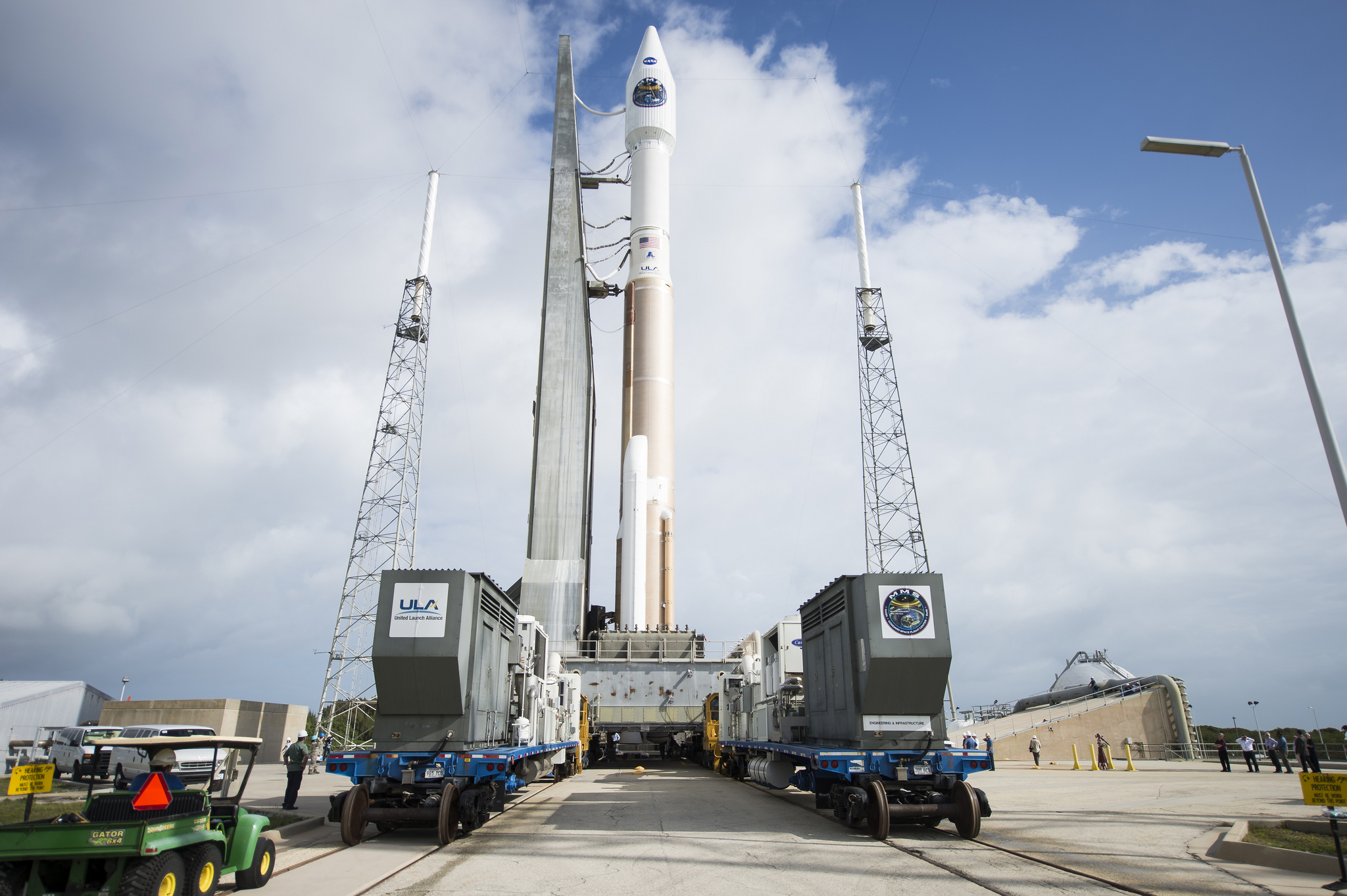NASA Mission to Track Earth's Magnetic Collisions Launching Tonight: Watch Live

CAPE CANAVERAL, Fla. — NASA is poised to launch four satellites tonight (March 12) on a mission to study a phenomenon in Earth's magnetic field that could be key to understanding space weather events that can impact the planet, and you can watch the liftoff live online.
The Magnetospheric Multiscale mission, or MMS for short, consists of four satellites that will fly in formation in Earth orbit. The satellites are currently packed atop a United Launch Alliance Atlas V rocket that is set to launch at 10:44 p.m. EDT (0244 GMT) tonight (March 12) from Space Launch Complex-41 at Cape Canaveral Air Force Station in Florida. NASA coverage of the launch will begin at 8 p.m. EDT (midnight GMT), and you can watch the launch live on Space.com, courtesy of NASA.
NASA has a 30-minute window in which to launch the MMS satelllites tonight. Current weather forecasts predict a 70-percent chance of good weather at launch time. [NASA's Magnetospheric Multiscale Mission in Pictures]
The launch likely will be visible from Orlando, about 50 miles west of Cape Canaveral, Clay Flinn, launch weather officer with the 45th Weather Squadron at Cape Canaveral Air Force Station, said in a news briefing on Tuesday (March 10). But, clouds might block the view of the rocket once it reaches 25,000 feet (7,600 meters) in altitude, Flinn said. This would mean the view would be obscured when the two rocket boosters separate from the rocket.
The $1.1 billion MMS mission will study a phenomenon known as magnetic reconnection, the key driver of what is known as space weather, which includes ejections of energetic particles from the sun and the creation of the auroras at the north and south poles. Magnetic reconnection is a "universal" process, say MMS scientists, and occurs in many other places in the universe. You can see a video of how NASA's MMS satellites work here.
MMS is the first and only space experiment dedicated solely to studying magnetic reconnection. This process occurs when magnetic field lines break and reconnect, releasing huge amounts of energy that subsequently accelerate particles to nearly the speed of light. The four MMS satellites were built and tested at NASA's Goddard Space Flight Center in Greenbelt, Maryland. Multiple institutions and universities contributed to the science and instrumentation on the MMS satellites.
The program's scientists say it is not yet known how the energy from magnetic field lines is transformed into heat and kinetic energy. MMS has a resolution that will allow scientists to observe these extreme events all the way down to the level of electrons. This is a resolution 100 times higher than previous experiments that have observed this phenomenon, according to MMS scientists.
Breaking space news, the latest updates on rocket launches, skywatching events and more!
This is NASA's 12th launch with an Atlas V rocket, according to Vernon Thorp, a program manager for NASA missions with United Launch Alliance.
If NASA is unable to launch the MMS satellites tonight, the space agency could try again on Friday night (March 13), mission managers said.
Visit Space.com today for complete coverage of NASA's Magnetospheric Multiscale mission launch.
Follow Calla Cofield @callacofield. Follow us @Spacedotcom, Facebook and Google+. Original article on Space.com.

Calla Cofield joined Space.com's crew in October 2014. She enjoys writing about black holes, exploding stars, ripples in space-time, science in comic books, and all the mysteries of the cosmos. Prior to joining Space.com Calla worked as a freelance writer, with her work appearing in APS News, Symmetry magazine, Scientific American, Nature News, Physics World, and others. From 2010 to 2014 she was a producer for The Physics Central Podcast. Previously, Calla worked at the American Museum of Natural History in New York City (hands down the best office building ever) and SLAC National Accelerator Laboratory in California. Calla studied physics at the University of Massachusetts, Amherst and is originally from Sandy, Utah. In 2018, Calla left Space.com to join NASA's Jet Propulsion Laboratory media team where she oversees astronomy, physics, exoplanets and the Cold Atom Lab mission. She has been underground at three of the largest particle accelerators in the world and would really like to know what the heck dark matter is. Contact Calla via: E-Mail – Twitter


